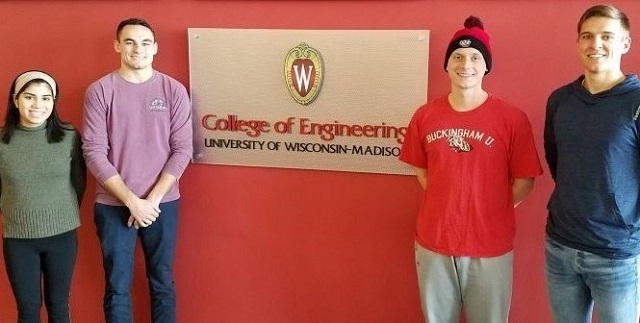Lower Extremity Strength Testing Device
Design Award
- Design Excellence Award Honorable Mention
Project Overview
During and after pregnancy, it is common for women to experience a loss of strength in the muscles of the pelvic girdle that is commonly referred to as pelvic instability. This can cause serious pain and discomfort, and new methods are continually being researched to relieve women of this condition during their already challenging pregnancy. In the medical field, a common test to determine if a woman is experiencing pelvic instability is to have her perform a leg lift without assistance, and then again with a doctor pushing against the sides of their hips. If the subject says the leg lift was easier with the doctor’s assistance, then they likely have pelvic instability. A device is needed to assess a maximal voluntary contraction (MVC) of the hip flexor (iliopsoas) and knee extensor (quadriceps, rectus femoris) muscles during a straight leg raise task to quantitatively assess this loss of strength in the lower extremities of women both during and after pregnancy. The device needs to be portable (to transport to different laboratories and clinics and/or to store between testing sessions), but sturdy enough to provide adequate resistance against a maximal voluntary contraction from an adult female. MVCs from both legs before and after a fatiguing exercise task will be tested in a supine position, so the device will need to be able to be moved into place and ready to acquire data relatively quickly (1 minute or less) following failure of the fatigue task.
Team Picture

Files
- Preliminary Presentation (February 22, 2019)
- Preliminary Report (February 27, 2019)
- 301 - 25 - strength_tester - ExecutiveSummary (April 19, 2019)
- 25 - strength_tester Final Poster (April 26, 2019)
- 25 -strength_tester Final Poster (No Notes) (April 26, 2019)
- Final_Report-Team_LEST (May 1, 2019)
- PDS (February 11, 2019)
Contact Information
Team Members
- Samuel Parmentier - Team Leader & BPAG
- Eric Arndt - Communicator
- Hayley Raj - BSAC
- Daniel Wildner - BWIG
Advisor and Client
- Prof. Darilis Suarez-Gonzalez - Advisor
- Dr. Bryan Heiderscheit - Client
- Dr. Rita Deering - Alternate Contact
Related Projects
- Spring 2019: Lower Extremity Strength Testing Device
- Fall 2018: Lower extremity strength testing device
